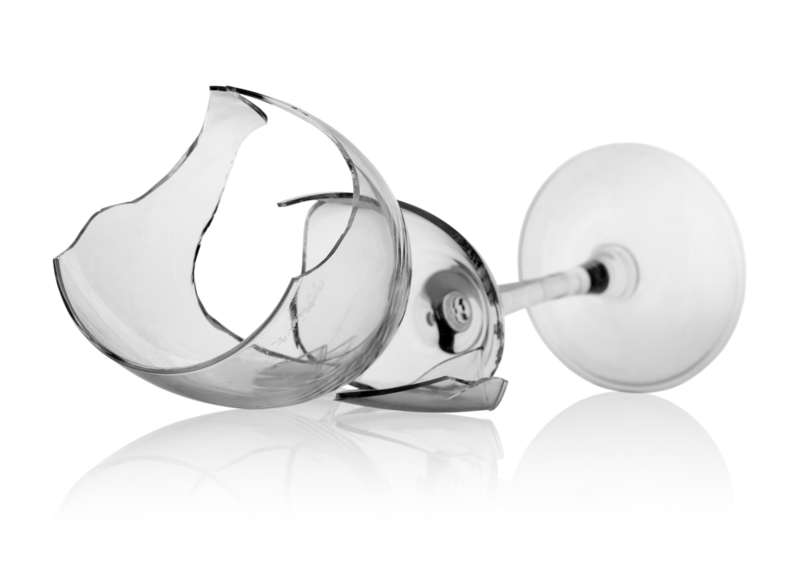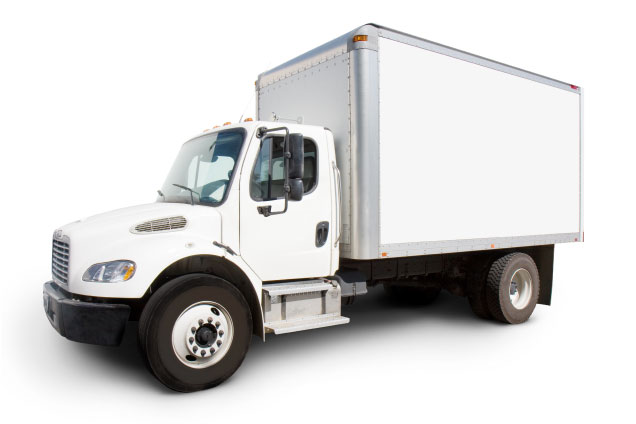Ensure Your Sofa's Longevity with These Pro Storage Tips
Posted on 15/06/2025
Ensure Your Sofa's Longevity with These Pro Storage Tips
Your sofa is more than just a place to sit; it's an investment in comfort and style for your home. Proper storage of your sofa, whether you're moving, remodeling, or simply trying to preserve it during a long-term absence, is essential for maintaining its condition and maximizing its lifespan. In this comprehensive guide, we'll explore expert strategies to ensure your sofa's longevity with pro storage tips. Let's dive into practical, research-backed methods to keep your couch in prime condition for years to come!

Why Proper Sofa Storage Matters
Many homeowners underestimate the impact of poor storage on furniture durability. Sofas are especially vulnerable to wear and tear, moisture, pests, and environmental changes. Without adequate preparation and care, even high-quality sofas can suffer irreversible damage. By investing time in proper sofa storage, you:
- Prevent structural damage and deformation
- Safeguard upholstery from stains, mold, and dust
- Protect delicate wood or metal components from corrosion and warping
- Maintain aesthetic appeal and comfort
- Retain sofa value for future use, resale, or heirloom purposes
Common Risks of Poor Sofa Storage
- Mold and mildew growth in humid conditions
- Infestation by insects or rodents
- Sun fading and fabric degradation
- Dust and debris accumulation
- Crushed cushions and lost support
Now that you know why sofa storage is important, let's cover the most effective pro tips for preserving your sofa's longevity.
Pre-Storage Preparation for Sofas
1. Thoroughly Clean Your Sofa
Start by deep-cleaning your sofa before storage. Dust, crumbs, and spills can attract pests and cause stubborn stains if left untreated. Different sofa materials require specific cleaning methods:
- Fabric Sofas: Use a vacuum with an upholstery attachment to remove dirt and debris. Spot-clean stains using fabric-safe cleaners following manufacturer recommendations. Allow fabric to dry completely before storing.
- Leather Sofas: Wipe leather surfaces with a soft, damp cloth. Condition the leather with a quality leather conditioner to prevent cracking and dryness.
- Wood or Metal Frames: Dust all frame elements and apply appropriate polish or rust-prevention treatments.
2. Disassemble When Possible
To ensure your sofa's longevity during storage, disassemble removable parts such as legs, cushions, and headrests. This reduces stress on joints and minimizes the risk of damage. Store all hardware in labeled bags and keep them with the sofa for easy reassembly.
3. Wrap and Protect Every Surface
Proper wrapping is crucial to protect your couch during storage. Use the following steps:
- Plastic Wrap: Avoid direct plastic contact with upholstery as it can trap moisture. Instead, first wrap the sofa in soft, breathable fabric covers, old sheets, or moving blankets.
- Bubble Wrap: Use bubble wrap on wooden or metal edges for extra protection against dings and scratches.
- Shrink Wrap: Apply shrink wrap over the entire sofa if you're storing it in a non-climate-controlled unit, but ensure it can ventilate to avoid mold.
These steps reduce the risk of tears, scratches, and environmental exposure during transit and storage.
Choosing the Right Storage Environment for Your Sofa
1. Opt for a Climate-Controlled Storage Unit
If possible, always choose a climate-controlled environment for long-term couch storage. Fluctuations in temperature and humidity can wreak havoc on both fabric and leather sofas:
- High humidity leads to mold and mildew growth
- Dry conditions dry out leather and crack wood frames
- Extreme cold or heat warps and weakens materials
By selecting a climate-controlled storage unit, you drastically increase your sofa's lifespan.
2. Raise Your Sofa Off the Floor
Even with the best environment, the floor of a storage space can retain moisture. Placing your sofa on pallets or sturdy blocks prevents ground moisture and allows air circulation. This small step helps to prolong your sofa's life and keeps pests at bay.
3. Allow Adequate Space
Don't cram items against your sofa. Leave enough space around it for air to circulate and to prevent accidental crushing of fabric or cushions. This also deters pests from nesting or hiding in tight corners.
Tips for Long-Term Sofa Storage Longevity
1. Routine Checks and Maintenance
Periodically check on your stored sofa to catch potential issues early. Look for:
- Signs of moisture damage or odor
- Pest activity or droppings
- Fabric or leather deterioration
- Support frame issues or sagging
Early intervention can save your sofa from extensive damage and costly repairs. If possible, rotate the position of the cushions to retain even support.
2. Avoid Sunlight Exposure
Whenever possible, store your sofa away from direct sunlight. UV rays can fade fabrics and make leather brittle. If your storage space has windows, cover them or position your sofa away from direct beams for optimal sofa longevity.
3. Use Desiccants or Moisture Absorbers
Slip moisture-absorbing packets or silica gel bags inside and around your sofa, especially if you're storing in a non-climate-controlled area. These products help prevent mold, mildew, and odors, ensuring your sofa retains its best condition over time.
4. Avoid Stacking Heavy Items
Never stack boxes, appliances, or other furniture atop your sofa, even temporarily. Excessive weight compresses cushions, weakens frames, and leaves unsightly marks. If storage space is tight, keep lighter, soft items on top, but avoid sharp or rough objects at all costs.
Special Considerations for Different Sofa Types
Leather Couch Storage Tips
- Before storage, clean and thoroughly condition all leather surfaces to prevent drying and cracking.
- Never cover with plastic alone; use breathable fabric covers to let the leather "breathe."
- Monitor for signs of dry rot over time; consider re-conditioning leather during long-term storage.
Fabric Sofa Storage Tips
- Ensure fabrics are completely dry before storage to prevent mildew.
- Use moth repellents or natural alternatives (like cedar blocks) to protect against textile pests.
- Store cushions separately in fabric covers to avoid flattening and transfer of dust.
Wooden or Metal Frame Sofa Tips
- Polish exposed wood with furniture wax to create a barrier against moisture.
- For metal frames, use rust-prevention treatments, especially in humid climates.
- Wrap protruding legs or arms with bubble wrap or foam for extra protection.
How to Prepare Your Sofa for Transport to Storage
1. Measure Doorways and Hallways
Before moving your sofa, measure all exit and entry points to your home and storage space. This reduces the risk of scraping or damaging the sofa in transit. Disassemble and remove cushions as needed for easier handling.
2. Use Proper Moving Equipment
- Dollies and sliders help protect sofa feet and fabrics from dragging and tearing.
- Ask for help with heavy or oversized sofas to avoid bending or distorting the frame.
- Lift--don't drag--to maintain sofa shape and integrity.
3. Load and Secure in Transport
During transport, keep your sofa vertical if possible and avoid packing under heavy objects. Secure with straps to prevent shifting, scratches, or impact damage. Taking these precautions will ensure your couch's longevity during the storage process.
Post-Storage Sofa Care: Bringing Your Couch Back Home
When the time comes to retrieve your sofa from storage, a few key steps ensure it's ready for use or display:
- Unwrap your sofa carefully, inspecting all surfaces for damage or pests
- Thoroughly clean and vacuum the sofa
- For leather, consider reapplying conditioner before use
- Let the sofa air out for several hours in a well-ventilated area
- Reassemble any removed components with saved hardware
- Fluff and rotate cushions to restore comfort and appearance

Pro Tips for Sofa Storage Longevity Recap
Ensuring your sofa's longevity with pro storage methods is all about preparation, environment, and ongoing care. Here's a summary of the best expert storage solutions:
- Clean and dry your sofa thoroughly before storage
- Wrap with breathable fabric covers and avoid direct plastic contact
- Disassemble removable parts for safer storage and transport
- Select a climate-controlled storage unit and raise your sofa off the ground
- Leave room for ventilation and avoid stacking heavy objects
- Check regularly for moisture, pests, or damage
- Use desiccants or moisture absorbers for added protection
Conclusion: Invest in Your Sofa's Future
Taking the time to properly store your sofa pays off in extended comfort, pristine appearance, and preserved value for your home. By following these pro storage tips and adopting a preventative mindset, you ensure that your furniture will be ready for use whenever you need it--without costly repairs or replacements. When it comes to sofa storage longevity, preparation and attention to detail truly make all the difference.
Remember, your sofa is a central piece of your living space. Treat it with care and use these expert hints to maximize its years of comfort, style, and functionality. Happy storing!





